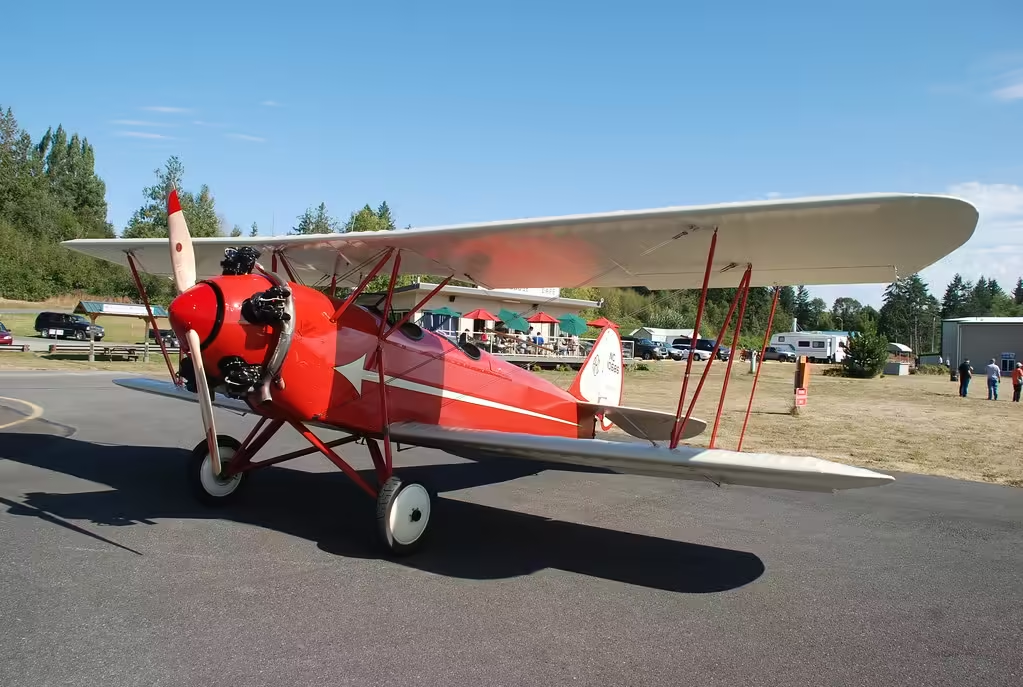
Table of Contents
While many general aviation aircraft and most commercial aircraft have a landing gear configuration similar to a tricycle, some are configured differently. A “taildragger” aircraft is characterized by having two wheels in front of the center of gravity and a small tailwheel at the rear. “taildragger” aircraft are known for requiring a separate set of skills, especially during landing. Obviously, learning to fly any airplane takes skill, time and practice. On the other hand, some locals argue that flying such a plane at a young age can be beneficial. Today we examine some of the related reasons.
Improved rudder skills of taildraggers
The conclusion drawn from any study on taildragger aircraft is that “they are relatively forgiving.” Again, this is more about takeoff and landing than flying, but the general idea is that a three-wheeled aircraft wants to maintain alignment, so pilots flying tailwheel aircraft need more control over their rudder. .
As noted by Sporty’s Flight Training Central,
“Once it begins to do so, the tail wheel will not stop moving sideways. If left unchecked, the result will be a ground loop in which the nose and tail trade off.
Since ailerons and brakes can achieve more, pilots trained to fly airplanes with conventional landing gear will become accustomed to using the rudder to rapidly steer the airplane harm than good. That said, having such mastery of the rudder and situational awareness will transfer over to tricycle-style aircraft.
Great for understanding energy management
Aviation and physics go hand in hand, as do everything else in our planet’s atmosphere. Potential energy is the energy arising from the object’s relative position (height) and kinetic energy is the energy arising from the object’s motion (airspeed). These are basic ideas that apply to all types of aircraft.
Pilots training for taildraggers, however, may become more familiar with them. Aircraft under control must better control their altitude and speed when approaching the runway, especially older models with conventional gear and no flaps. As Sporty’s Flight Training Central describes it, pilots who have previously trained on aircraft such as the Cessna 172 Skyhawk “may be forced to plan ahead and fly more precisely.”
Can help enhance landings
Many sources suggest that landing a conventional geared aircraft was made easier by the additional experience gained by training on a tricycle-style gear aircraft before learning to fly a conventional geared aircraft, almost as a combination of the previous two arguments. Once they are mastered, pilots will find it easier to land a variety of aircraft because they are rather rigid when landing close to the ground or on the ground, leaving very little room for error.
They are very useful for practicing crosswind landings. Going back to the first point again, a pilot flying a tailwheel airplane gets used to controlling the airplane with the rudder, which is necessary to correct any drift during landing. Pilots must maintain control of the aircraft until it is safely level, perhaps more so than a tricycle-style aircraft, otherwise they risk damage after all wheels hit the ground.
More resistant to damage
In terms of general aviation, tailwheel aircraft are preferable for bush flying regardless of the above mentioned considerations. Taildraggers, with their two off-center front wheels, are less likely to fall into a hole and seriously damage the engine than nose wheel-style aircraft.
Furthermore, a taildragger, such as a Citabria or even a Douglas DC-3 airliner, would indicate if you compare a nose wheel aircraft, such as a Cessna 172, with a taildragger on the ground. This gives the propeller extra space above the ground, which helps prevent propeller strike, which can damage the engine internally even if it is in good condition externally.
Unlocks an exciting range of planes to fly
Although you can fly a variety of airplanes by learning to fly tricycle-style geared airplanes, many types are intended to be taildraggers, which may be of interest to those interested in recent general aviation models or antique airplanes. Mastering one of these aircraft will enable you to fly more and enable you to pilot a variety of exciting models that you would not be able to or otherwise find more difficult to fly.
However, it is important to remember that the nose wheel plane can be used to develop the skills necessary to fly a taildragger. If you’re interested, Sporty’s Flight Training Central recommends that you try to land in a normal steady crosswind while pushing yourself, and that you do this in a tricycle-style airplane with more aggressive rudder movements for control the centerline, and perform several no-flap landings.
READ | Bush planes: Power Features That Set Them Apart From Other Types Of planes


1 thought on “5 reasons why taildraggers make good first-time pilots”